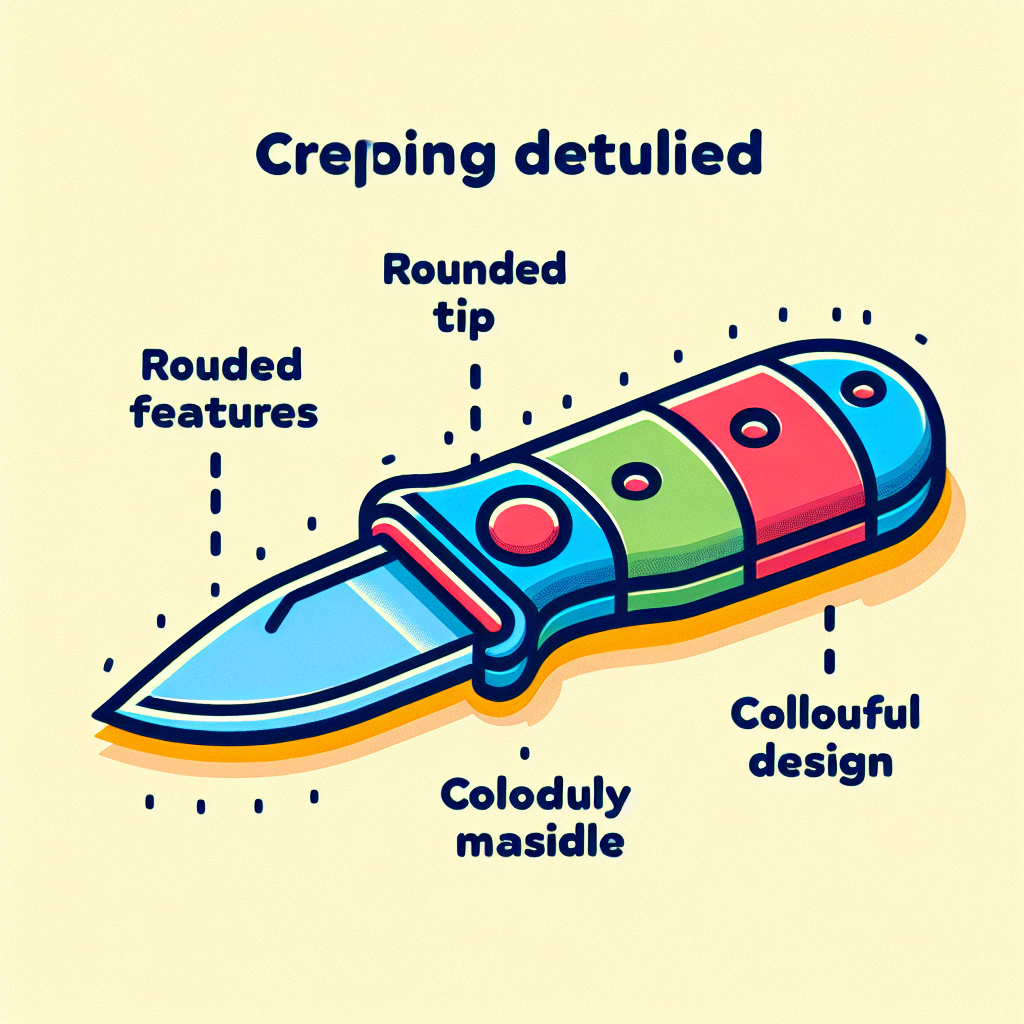In this article, we will explore the important topic of knife safety for kids, specifically focusing on teaching young chefs. Cooking can be a fun and educational activity for children, but it is crucial to ensure that they understand the potential dangers of handling knives. With Tastepan as your guide, we will provide you with practical tips and techniques to equip your young ones with the necessary skills to safely navigate the kitchen. From proper grip and handling to basic cutting techniques, our expert advice will empower your children to become confident and responsible little chefs. So, let’s dive into the world of knife safety and embark on this culinary adventure together!
Knife Safety for Kids: Teaching Young Chefs
Cooking is not only a wonderful skill to have, but it also fosters creativity, independence, and a love for healthy eating. If your child is eager to help out in the kitchen, it’s important to teach them about knife safety. By equipping them with the knowledge and skills to handle knives safely, you can empower them to become confident young chefs. This article will guide you through the essential aspects of knife safety for kids, from selecting the right knife to teaching proper grip and technique. So let’s dive in and create a safe and enjoyable cooking experience for your young culinary enthusiasts.

1. Importance of Knife Safety for Kids
Before delving into the specifics of knife safety for kids, it’s important to emphasize why it matters. Knives are sharp tools that can cause serious injuries if not handled properly. By teaching your child about knife safety, you can prevent accidents in the kitchen and instill good habits that will benefit them throughout their lives. By understanding the importance of knife safety, your child will learn to respect and appreciate the potential danger of knives, making them more responsible and cautious in their kitchen endeavors.
2. Selecting the Right Knife for Kids
When it comes to teaching knife safety to kids, choosing the right knife is crucial. Opt for a knife made specifically for children, featuring a serrated or non-serrated blade with a rounded tip. These knives are designed to be safer and easier for little hands to handle. Additionally, consider the size and weight of the knife. It should fit comfortably in your child’s hand and not be too heavy for them to control. Remember, selecting the right knife is the foundation of teaching proper knife skills and ensuring your child’s safety in the kitchen.

3. Basic Knife Safety Rules
Before your child even holds a knife, it’s essential to establish a set of basic knife safety rules. Explain these rules to them in a clear and understandable manner, reinforcing the importance of following them at all times. Some fundamental knife safety rules for kids include:
- Always ask for adult supervision and permission before using a knife.
- Keep fingers and other body parts away from the blade.
- Never use a knife to play, gesture, or engage in any non-cooking activities.
- Be mindful of the knife’s position and never leave it unattended.
- Always use a cutting board or a stable surface to prevent slips.
- Store knives safely, ensuring they are out of reach for young children.
By reinforcing these basic knife safety rules, you will create a strong foundation for your child to build upon as they develop their knife skills.
4. Preparing the Environment for Safe Knife Use
Creating a safe environment for knife use is just as important as teaching proper knife skills. Clear the area of any unnecessary items or clutter that could lead to accidents. Ensure there is ample space for your child to work comfortably and without distractions. Proper lighting is also crucial, as it allows your child to clearly see what they are doing and minimizes the risk of accidents. Additionally, make sure the cutting board is stable and secure on the countertop, preventing any potential slips or misalignments.

5. Teaching Proper Grip and Technique
Once you have established a safe environment, it’s time to teach your child the proper grip and technique for handling a knife. Start by instructing them on the correct way to hold the knife, guiding their fingers to form a firm and secure grip. Show them how to position their hand on the handle while curling their fingers away from the blade. Emphasize the importance of keeping their fingers away from the cutting edge at all times. When it comes to technique, encourage your child to use a controlled downward motion, with the knife’s tip staying in contact with the cutting board. Teach them to take their time and focus on precision rather than speed. With practice and guidance, they will gradually build their skills and confidence in using a knife.
6. Identifying and Avoiding Hazards
In any cooking activity, it’s crucial to be aware of potential hazards and teach your child how to identify and avoid them. This applies to knife safety as well. Make sure your child understands common hazards, such as slippery cutting boards, distractions in the kitchen, or holding food improperly during cutting. Teach them the importance of staying focused, keeping their workspace clean, and using appropriate kitchen tools for different tasks. By instilling these habits early on, you are equipping your child with the skills to navigate potential hazards and prevent accidents.
7. Supervision and Responsibility
While teaching knife safety rules and techniques is essential, it’s equally important to emphasize the need for adult supervision. Never leave your child unsupervised while they are handling knives in the kitchen. Always be present to offer guidance, answer questions, and ensure they are following safety protocols. As they gain experience and demonstrate responsible behavior, you can gradually grant them more independence. However, remember that supervision is still necessary until you are confident in their ability to handle knives safely.
8. Building Confidence and Independence
As your child progresses in their knife skills, it’s important to nurture their confidence and independence in the kitchen. Encourage them to take on age-appropriate tasks, such as slicing soft fruits or vegetables, under your supervision. Praise their efforts and provide constructive feedback to help them improve. Gradually introduce them to more complex tasks as they demonstrate proficiency and responsibility. By allowing them to take ownership of their cooking endeavors, you are fostering their love for cooking and empowering them to become independent young chefs.
11. Resources for Further Learning
To further support your child’s journey in knife safety and culinary skills, there are numerous resources available. Online platforms like Tastepan offer expert cooking tips and techniques specifically tailored for young chefs. These platforms provide comprehensive guides and videos that can assist you in teaching your child about knife safety and cooking basics. Additionally, consider enrolling your child in a cooking class or workshop designed for children. These interactive learning environments provide hands-on experiences and expert guidance, helping your child develop their passion for cooking while emphasizing the importance of safety.
In conclusion, teaching knife safety to kids is of utmost importance when nurturing their love for cooking. By selecting the right knife, establishing basic safety rules, and teaching proper grip and technique, you equip your child with the skills and knowledge necessary for safe knife use. Creating a safe environment, identifying hazards, and emphasizing adult supervision further enhance their safety. As your child gains confidence and independence, they will develop into capable young chefs, enjoying the art of cooking while maintaining a high regard for safety. So let’s embrace this culinary journey with our young chefs, empowering them to create delicious meals while prioritizing their well-being and the joy of cooking.

